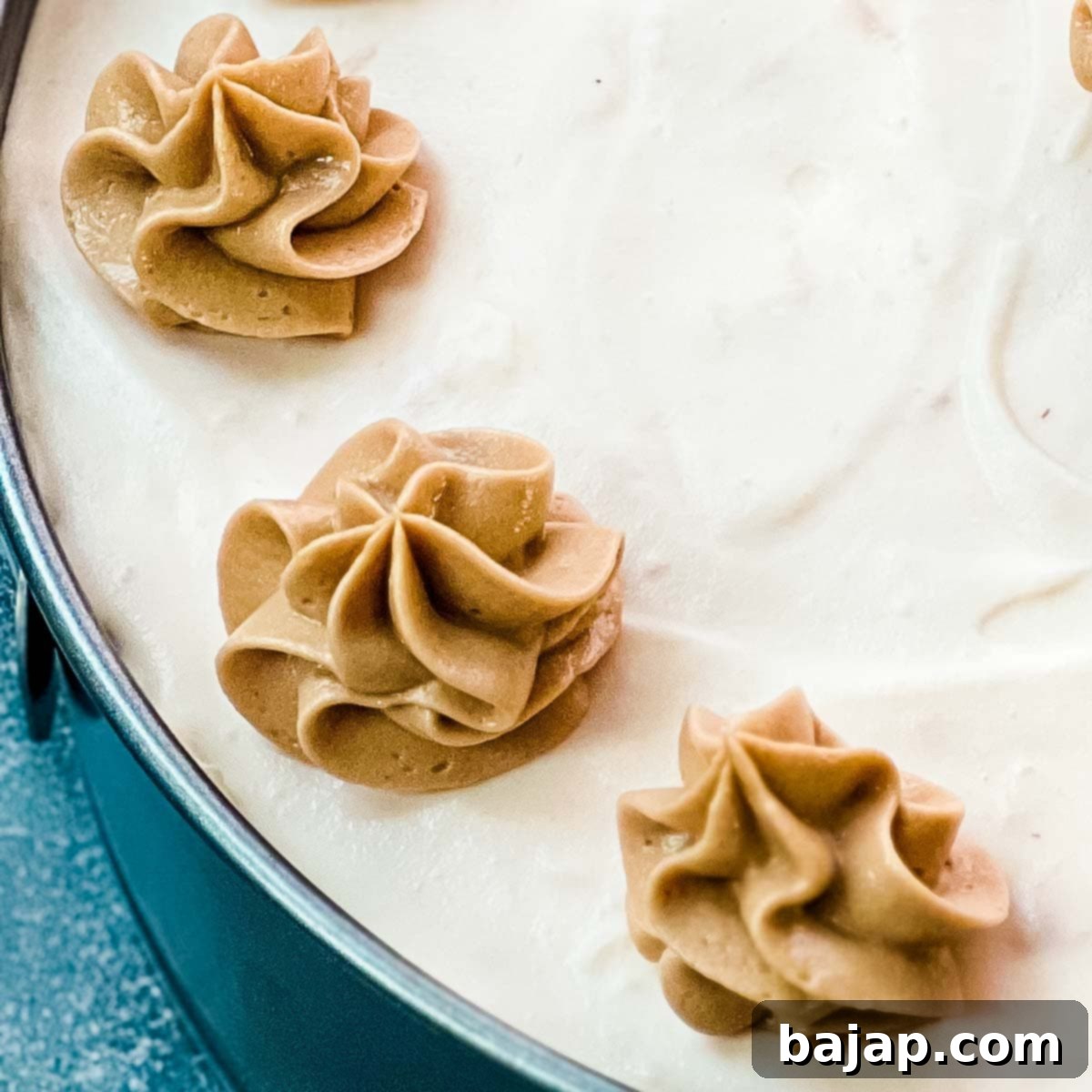The Ultimate Guide to Making Decadent Chocolate Cream Cheese Buttercream
Imagine a dessert that not only tastes incredible but also looks like it came straight from a professional bakery. The secret often lies in a luscious, decorative addition of homemade chocolate cream cheese buttercream! This velvety, rich frosting is the perfect finishing touch for a variety of treats, from a moist flourless chocolate cake to an amazing no-bake strawberry cheesecake. It’s the kind of frosting that elevates any sweet creation, turning a simple cake into a showstopper.
While the idea of making your own cream cheese buttercream might seem daunting or time-consuming, we’re here to prove just how effortlessly delicious it can be. This super simple and sweet recipe can be whipped up in a matter of minutes, transforming basic ingredients into a luxurious topping that will impress everyone. Forget store-bought tubs; homemade is always superior, offering unparalleled freshness and flavor.
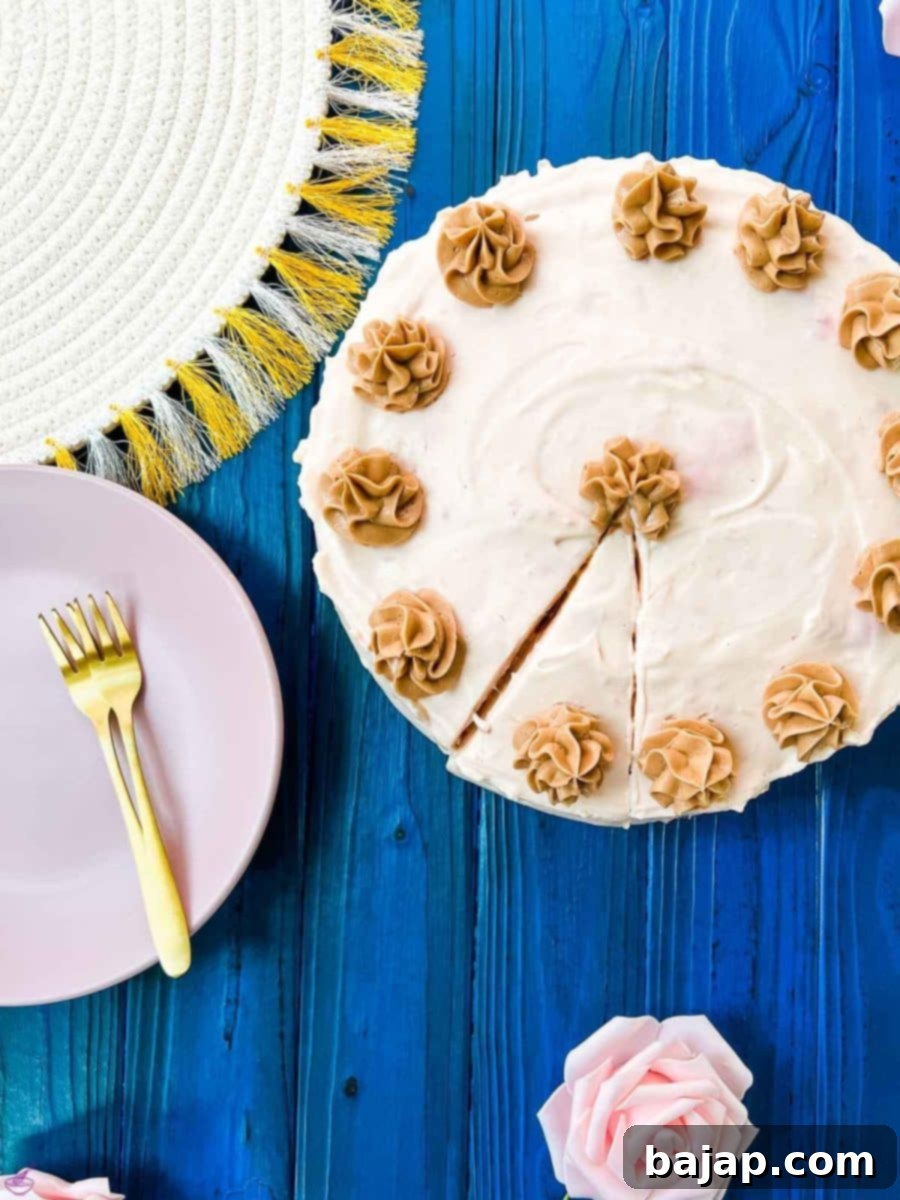
Beyond its wonderfully intense chocolate flavor, this buttercream boasts a fantastic, firm consistency. This stable texture isn’t just for show; it’s what truly allows you to unleash your creative side when it comes to decorating! Whether you’re piping intricate designs, creating elegant swirls, or simply spreading a smooth, even layer, this buttercream holds its shape beautifully.
Its robust and firm texture makes it the ideal frosting for special occasions like birthdays, anniversaries, or any festive celebration where you want to add those extra little personal touches for your loved ones. Imagine a birthday cake adorned with swirls of rich chocolate that stand tall and proud, or cupcakes topped with perfect rosettes. This recipe empowers you to create stunning desserts with confidence.
Why This Chocolate Cream Cheese Buttercream Stands Out
There are countless buttercream recipes out there, but this chocolate cream cheese version truly distinguishes itself. It perfectly balances the tanginess of cream cheese with the rich depth of chocolate, resulting in a flavor profile that is both complex and incredibly satisfying. Unlike some buttercreams that can be overly sweet, this recipe achieves just the right amount of sweetness, allowing the chocolate and cream cheese flavors to shine.
The secret to its exceptional nature lies in the combination of high-quality ingredients and a simple, yet effective, method. The inclusion of cream cheese adds a delightful tang and a lighter, more complex texture compared to traditional buttercreams. It’s less cloyingly sweet and more refreshing, making it an irresistible choice for a wide range of desserts. Plus, its stability means your decorations will look great for longer, even at room temperature for a short period.
🥘 Ingredients: The Building Blocks of Perfection
Creating this irresistible chocolate cream cheese buttercream requires just a few key ingredients. The quality of each component directly impacts the final taste and texture, so always opt for the best you can find.
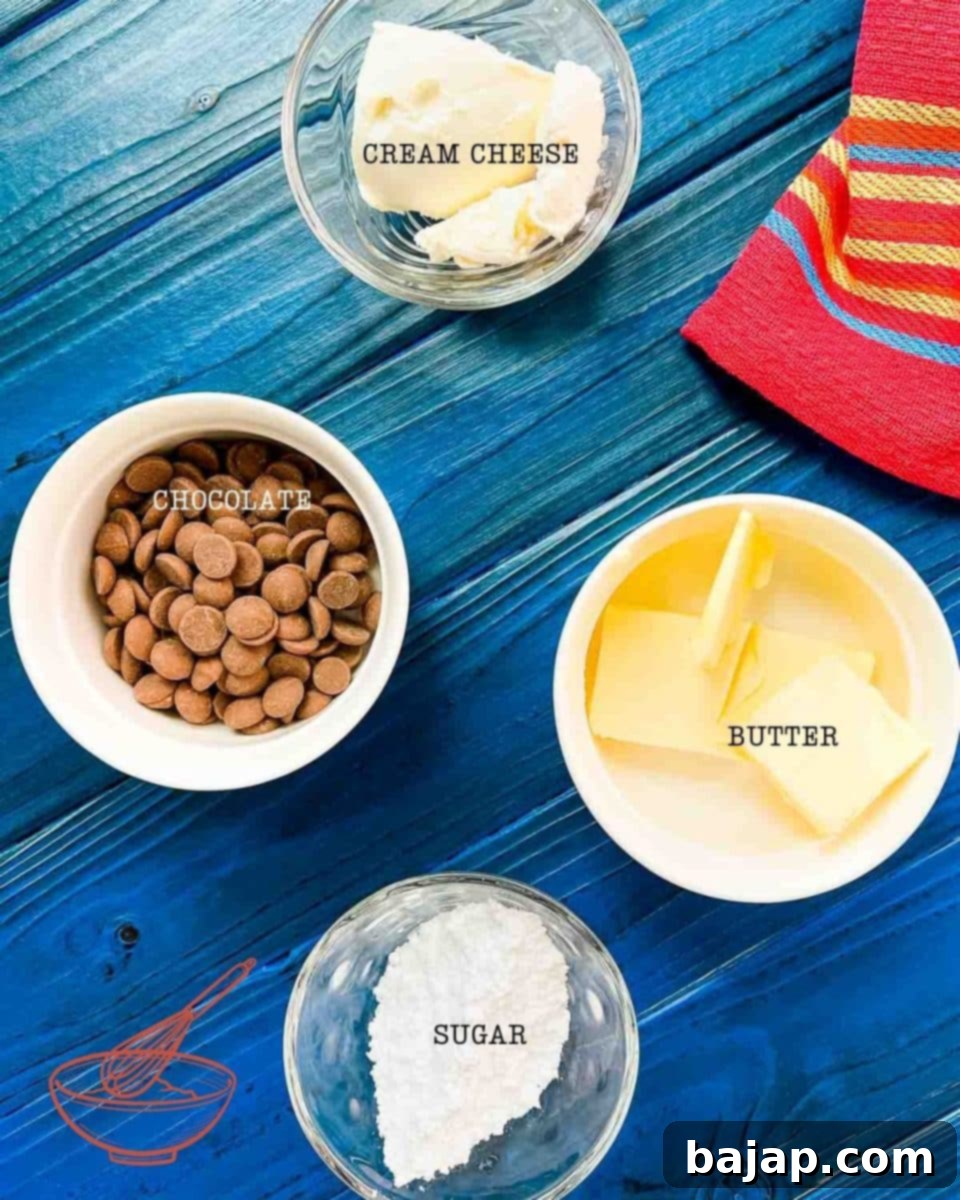
Detailed Ingredient Breakdown:
- Chocolate Couverture: This is where the magic begins! Both dark and milk chocolate work wonderfully, depending on your preference for sweetness and intensity. However, the most crucial factor is using high-quality chocolate couverture. Couverture chocolate has a higher cocoa butter content, which gives it a superior shine, snap, and melt-in-your-mouth texture when properly tempered or melted. This quality translates directly into a smoother, richer buttercream. Avoid using standard chocolate chips if you can, as they often contain stabilizers that can affect the texture of your melted chocolate and, subsequently, your buttercream.
- Cream Cheese: For the best results and a firm buttercream, always opt for full-fat cream cheese in block form, not the spreadable kind that comes in tubs. Block cream cheese has less water content, which is essential for achieving the desired thick consistency. Make sure it’s softened to room temperature before you begin; this will help it blend smoothly without lumps.
- Unsalted Butter: Just like the cream cheese, unsalted butter should be at room temperature. Softened butter creamed with the cream cheese forms the fluffy base of your buttercream. Unsalted butter allows you to control the overall saltiness of your frosting, though a tiny pinch of salt can enhance the chocolate flavor if desired.
- Powdered Sugar (Confectioners’ Sugar): This fine sugar dissolves easily into the buttercream, ensuring a smooth, grit-free texture. Sifting the powdered sugar before adding it is highly recommended to prevent lumps and ensure a perfectly silky frosting.
For precise quantities and measurements, please refer to the comprehensive recipe card below.
🔪 Step-by-Step Instructions for Flawless Buttercream
Making this chocolate cream cheese buttercream is straightforward, but paying attention to each step will ensure a perfect result every time. Follow these simple instructions for a smooth and decadent frosting.
Melting the Chocolate: Two Methods
The first crucial step is to properly melt your chocolate couverture. This needs to be done gently to prevent it from seizing.
Water Bath (Bain-Marie): If you’re using a water bath for melting, you’ll need two pots of different sizes. Fill the larger pot with about 3-4 finger-widths of water and bring it to a gentle simmer. Place the second, smaller pot inside the larger one, ensuring the bottom of the smaller pot does not touch the simmering water. Add your chocolate couverture to the upper, smaller pot. Melt the chocolate over moderate heat, stirring continuously, as the rising steam gently melts it. This indirect heat prevents the chocolate from burning or seizing.
Tempering Unit: For those with a tempering unit, simply add the chocolate to be melted and set the device to the appropriate melting temperature. For white and milk chocolate, this is typically around 40 °C (104 °F). For dark chocolate, set it to approximately 50 °C (122 °F). A tempering unit provides precise control, ensuring a perfect melt.
Cooling the Chocolate: Patience is Key
After your chocolate has completely melted and is smooth, it’s essential to allow it to cool down before mixing it with the other ingredients. This cooling process prevents the chocolate from melting the butter and cream cheese, which would result in a greasy, runny buttercream. Allow at least 10 minutes for the melted chocolate to cool down to a warm (but not hot) temperature. You should be able to comfortably touch the bowl.
Combining Ingredients: Whipping to Perfection
Once the chocolate is cooled, it’s time to bring all the components together. In a large mixing bowl, combine the softened cream cheese, the soft unsalted butter, and the sifted powdered sugar. Add the cooled melted chocolate to this mixture.
Using an electric mixer, such as a KitchenAid stand mixer with a paddle attachment, is highly recommended for achieving the best consistency. Start at a low speed to incorporate the ingredients, then gradually increase to medium speed. Whip until all ingredients are thoroughly combined and the mixture is light, fluffy, and smooth. Be sure to scrape down the sides of the bowl periodically to ensure everything is evenly mixed.
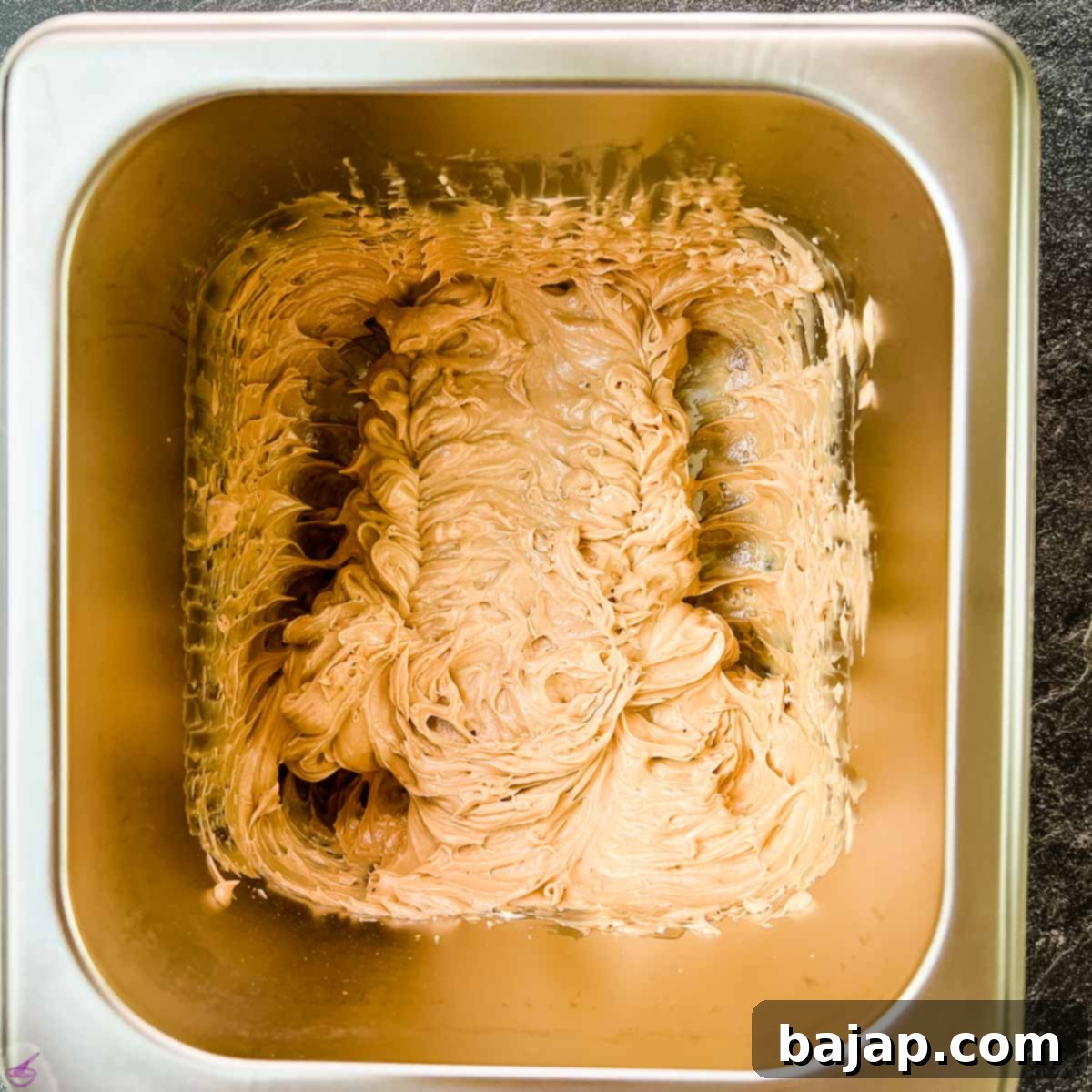
Decorating Your Masterpiece
Once you’ve achieved a beautifully mixed, smooth, and consistent buttercream, it’s ready for decorating! Carefully scrape the buttercream out of your mixing bowl and transfer it into a piping bag. The choice of nozzle is entirely up to your creative vision. Personally, a star nozzle is a fantastic choice for creating elegant borders, rosettes, or intricate patterns on cakes and cupcakes, giving a professional finish.
Don’t hesitate to experiment with different piping tips – a round tip for smooth dollops, a basketweave tip for textured designs, or even just a simple snipped corner of the bag for rustic swirls. This firm and flavorful chocolate cream cheese buttercream is your canvas; feel free to improvise and express your unique style!
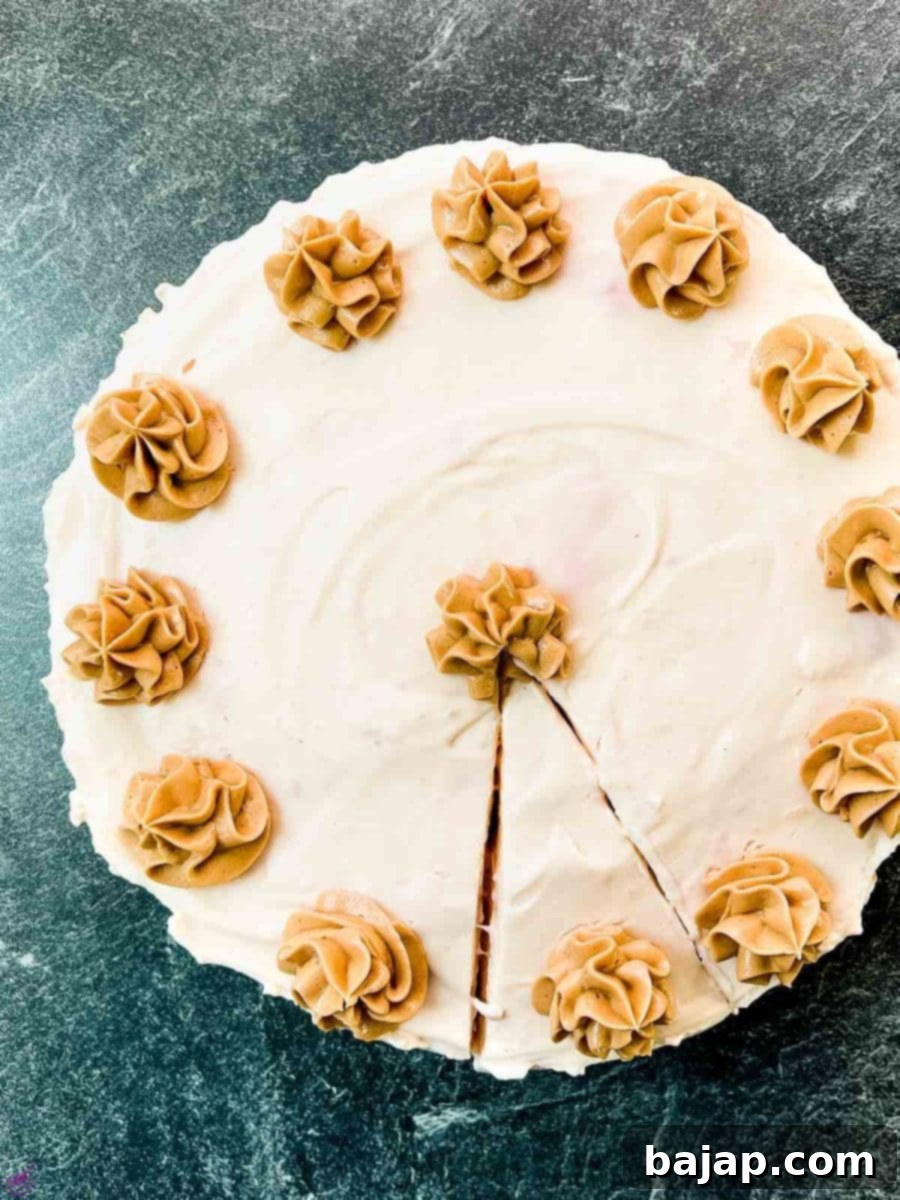
🍽 Essential Equipment for Your Kitchen
Having the right tools can make the process of creating this delicious chocolate cream cheese buttercream even smoother and more enjoyable. Here’s a list of the key equipment you’ll need:
- Water Bath or Tempering Device: Essential for gently melting the chocolate. A double boiler or simply two nested pots (as described in the instructions) works perfectly.
- Electric Mixer: A stand mixer, such as a KitchenAid, or a powerful hand mixer is crucial for whipping the ingredients to the desired light and fluffy consistency. The paddle attachment is ideal for buttercream.
- Spatula: A sturdy rubber or silicone spatula is indispensable for scraping down the sides of the mixing bowl, ensuring all ingredients are thoroughly incorporated. It’s also great for transferring the buttercream.
- Piping Bag with Star Tip (or other fun nozzle attachment!): For decorating, a disposable or reusable piping bag fitted with your favorite nozzle will allow for precise and beautiful application of the buttercream. A star tip is a versatile choice for many decorative styles.
💡 Tips for Success
Achieving perfect chocolate cream cheese buttercream is easy with a few simple tips:
- Room Temperature Ingredients: This is perhaps the most important tip. Ensure your cream cheese and butter are truly at room temperature. This allows them to cream together smoothly, preventing lumps and creating a light, airy texture. Cold ingredients will result in a clumpy, stiff buttercream.
- Sift Your Powdered Sugar: Powdered sugar often contains small lumps. Sifting it before adding to the mixture will guarantee a silky-smooth, lump-free buttercream.
- Cool the Melted Chocolate: As mentioned, don’t add hot chocolate to your butter and cream cheese mixture. It will melt them, resulting in a runny, greasy mess. Let it cool to a warm (not hot) temperature.
- Don’t Overmix: Once all ingredients are combined, mix until just smooth and fluffy. Overmixing can incorporate too much air or break down the fat, leading to a less stable or grainy buttercream.
- Adjust Consistency: If your buttercream seems too stiff, you can add a tiny splash of milk or cream, one teaspoon at a time, until desired consistency is reached. If it’s too thin, a brief chill in the fridge (10-15 minutes) can firm it up.
✨ Variations and Customization
This chocolate cream cheese buttercream recipe is wonderfully versatile and can be adapted to suit your taste or specific dessert:
- Chocolate Intensity: Adjust the type of chocolate! Use extra dark chocolate for a deep, bittersweet flavor, or go with a sweeter milk chocolate for a milder, creamier taste. A blend of both can also create a perfectly balanced profile.
- Flavor Extracts: Enhance the chocolate with other extracts. A dash of almond extract, peppermint extract (for a holiday twist!), or a few drops of orange extract can beautifully complement the chocolate.
- Coffee Kick: Dissolve 1-2 teaspoons of instant espresso powder in a tablespoon of hot water, cool it, and add it to the mixture with the melted chocolate. Coffee is a natural enhancer for chocolate flavor.
- Spice It Up: A pinch of cinnamon, chili powder, or even a tiny amount of cayenne pepper can add a surprising depth and warmth to your chocolate buttercream, perfect for adventurous palates.
- Nutty Notes: For a textural contrast and flavor boost, fold in finely chopped toasted nuts like pecans or walnuts after the buttercream is fully mixed.
If you’re craving a different flavor profile, explore Sherry’s butter cream cheese frosting for a classic white option, or try our easy homemade cream cheese frosting featuring white chocolate couverture for a subtle, sweet twist!
🌡 Storage and Make-Ahead Tips
Proper storage is key to enjoying your delicious chocolate cream cheese buttercream for days to come, whether on its own or decorating your desserts.
- Storing Leftover Buttercream: Any leftover frosting will stay wonderfully fresh in the fridge. Simply transfer it to an airtight container to prevent it from absorbing other odors and keep it for up to two weeks.
- Reviving Stored Buttercream: When you’re ready to use chilled buttercream, let it come to room temperature for about 30-60 minutes. Then, re-whip it with your electric mixer for a minute or two until it’s light and fluffy again. If it’s too stiff, a tiny splash of milk (½ to 1 teaspoon) can help bring it back to the perfect consistency.
- Storing Decorated Desserts: If you’ve decorated a cake or cupcakes with this buttercream, it’s best to store them in an airtight container in the refrigerator. The cream cheese makes refrigeration necessary.
- Serving at Room Temperature: While refrigerated storage is best, if you’re transporting your tasty treats to a party or serving them, they can remain out of the fridge for no more than two hours. Beyond that, the quality and food safety can be compromised.
- Freezing Buttercream: For longer storage, you can freeze this buttercream! Place it in a freezer-safe, airtight container for up to 1 month. Thaw in the refrigerator overnight, then bring to room temperature and re-whip as described above.
🙋🏻 Frequently Asked Questions (FAQ)
Here are some common questions about chocolate cream cheese buttercream:
Not exactly, but they are related! The main difference between traditional cream cheese frosting and standard buttercream lies in their primary fat component. Cream cheese frosting, as the name suggests, uses cream cheese as its star ingredient, giving it a distinctive tang and softer texture. Buttercream, on the other hand, primarily uses butter, often resulting in a richer, firmer frosting. This particular recipe for chocolate cream cheese buttercream is a delightful hybrid, combining both cream cheese and butter to offer the best qualities of each: the tangy richness of cream cheese with the classic stability and smooth texture of buttercream.
The “better” choice truly comes down to personal preference and the dessert you’re pairing it with! Some people absolutely adore the tangy, slightly less sweet profile of cream cheese frosting, especially on classics like red velvet cake or carrot cake. Others prefer the pure buttery richness and versatility of traditional buttercream for its ability to hold intricate piped designs. Luckily, this chocolate cream cheese buttercream offers the best of both worlds, providing a rich, creamy, and tangy chocolate flavor with excellent piping consistency. It’s often a crowd-pleaser that satisfies both camps.
If you find your cream cheese buttercream is a bit too soft for your decorating needs and you want to stiffen it up before piping your beautiful designs, there’s a simple trick. Place the bowl of buttercream in the refrigerator for about 10-15 minutes. The cold temperature will help firm up the butter and cream cheese. After chilling, give it a quick whip with your mixer to restore its smooth consistency before transferring to a piping bag. If it’s still too soft, you can add a tablespoon or two of sifted powdered sugar and re-whip until desired consistency is achieved.
Yes, absolutely! Due to the fresh cream cheese content, this buttercream (and any frosting containing cream cheese) should always be refrigerated. Cream cheese is a dairy product and needs to be kept cold to maintain its freshness and prevent spoilage. Store your buttercream in an airtight container or seal your decorated dessert well to protect it from odors and keep it fresh in the refrigerator. Never leave cream cheese-based frostings out at room temperature for more than two hours.
Yes, this chocolate cream cheese buttercream is naturally gluten-free! All the ingredients – chocolate couverture, cream cheese, unsalted butter, and powdered sugar – are typically gluten-free. However, it’s always a good practice to double-check the labels of your specific brands, especially for chocolate couverture, to ensure no hidden gluten-containing ingredients or cross-contamination from manufacturing processes, if gluten sensitivity is a significant concern.
A bitter taste in your chocolate buttercream can usually be attributed to the type of chocolate you’re using. If you’ve opted for a very high percentage dark chocolate (e.g., 70% cocoa or higher) and prefer a sweeter frosting, it might naturally taste more bitter. To counteract this, you can try adding a bit more powdered sugar, or a tiny pinch of salt to enhance the sweetness perception. Ensure your chocolate couverture is of good quality, as poor quality chocolate can also sometimes contribute to an off-flavor. If you prefer a less intense chocolate flavor, consider using a milk chocolate or a blend of dark and milk chocolate for your next batch.
Other Recipes You’ll Love
If you enjoyed making this decadent buttercream, you might also love exploring some of our other delightful dessert recipes:
- Sour Cream Cookies with Pearl Sugar: A soft, chewy cookie with a delicate sweetness.
- Intense Orange-flavored Whipped Cream: A bright and zesty topping for any fruit dessert or chocolate cake.
- Divine Chocolate-flavored Whipped Cream: Another rich chocolate topping, but lighter than buttercream.
- Strawberry-flavored Whipped Cream: A fruity, airy complement to spring and summer desserts.
- Best No-Bake Chocolate Ricotta Cheesecake: A creamy, indulgent dessert that requires no oven time.
- Best Homemade Vanilla Ice Cream Recipe: The perfect classic ice cream, churned to perfection.
- No-Bake Pumpkin Cheesecake: A seasonal favorite that’s quick and easy to prepare.
- Dark Chocolate Mousse with Heavy Cream {Gluten-Free}: An elegant and airy chocolate dessert.
If you make this scrumptious chocolate cream cheese buttercream recipe, we’d absolutely love to hear from you! Please let us know how you liked it by giving it a ★★★★★ star rating and leaving a comment below. Your feedback means the world to us! This would be awesome! You can also sign up for our Newsletter to receive weekly delicious homemade recipes directly in your inbox. Or, follow me on Pinterest or Instagram and share your delightful creation with me. Just tag me @combinegoodflavors and use the hashtag #combinegoodflavors, so I don’t miss your culinary masterpieces!
📖 Recipe Card: Chocolate Cream Cheese Buttercream
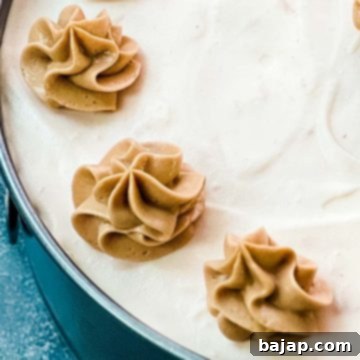
Chocolate Cream Cheese Buttercream
Nora
Save RecipeSaved!
Pin Recipe
Equipment
-
Water bath or tempering device
-
Electric Handmixer
-
Spatula
-
Piping bag with star tip
Ingredients
- ½ cup Chocolate couverture hight quality!
- ¼ cup Cream cheese
- 3 tablespoon Butter unsalted, soft
- ¼ cup Powdered sugar
Instructions
-
Melt the chocolate in a water bath or tempering device.½ cup Chocolate couverture
-
After melting, allow the melted chocolate to cool for 10 minutes.
-
Then whip all the ingredients together.¼ cup Cream cheese, 3 tablespoon Butter, ¼ cup Powdered sugar, ½ cup Chocolate couverture
-
Fill into a piping bag with a star nozzle and decorate the cake.
Notes
Nutrition values are estimates only, using online calculators. Please verify using your own data.

🤎 You Might Also Like These Sweet Indulgences
- Divine Chocolate Flavored Whipped Cream
- Strawberry Flavored Whipped Cream
- Intense Orange Flavored Whipped Cream
- Homemade Sacher Torte
⛑️ Food Safety Guidelines
When working with food, especially ingredients like cream cheese and butter, always prioritize food safety to ensure your delicious creations are safe to enjoy. Follow these essential guidelines:
- Cook to a minimum temperature of 165 °F (74 °C) for any dishes involving raw meat or eggs (though not directly applicable to this frosting, it’s a general kitchen safety rule).
- Do not use the same utensils on cooked food that previously touched raw meat or unwashed produce.
- Always wash your hands thoroughly with soap and warm water after touching raw meat, unwashed produce, or before handling ready-to-eat foods like buttercream.
- To prevent bacterial growth, do not leave food sitting out at room temperature for extended periods, especially dairy-based products like this buttercream.
- Never leave cooking food unattended; it can quickly burn or become a fire hazard.
- When cooking, use oils with a high smoking point to avoid the formation of harmful compounds, especially for high-heat cooking.
- Always ensure good ventilation when using a gas stove or oven to prevent the buildup of fumes.
For further comprehensive information on safe food handling practices, please refer to the guidelines provided by the U.S. Food & Drug Administration (FDA).
